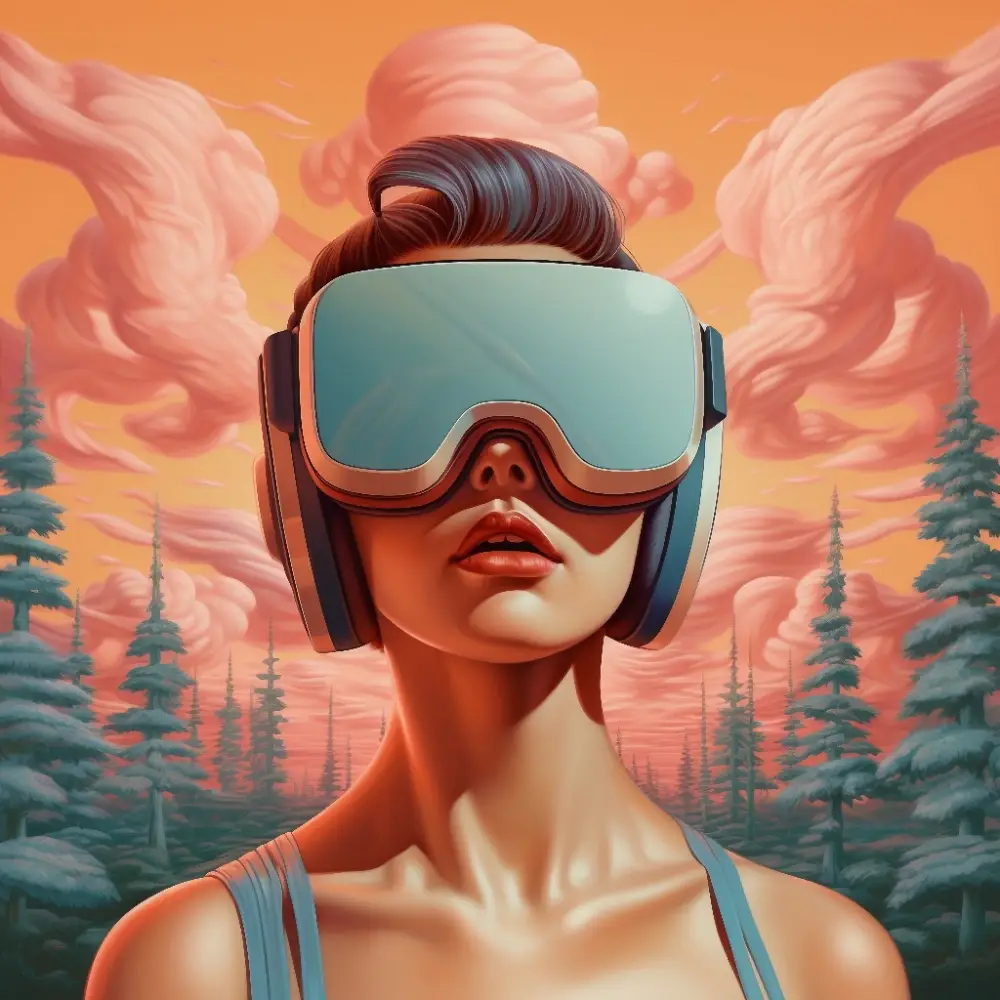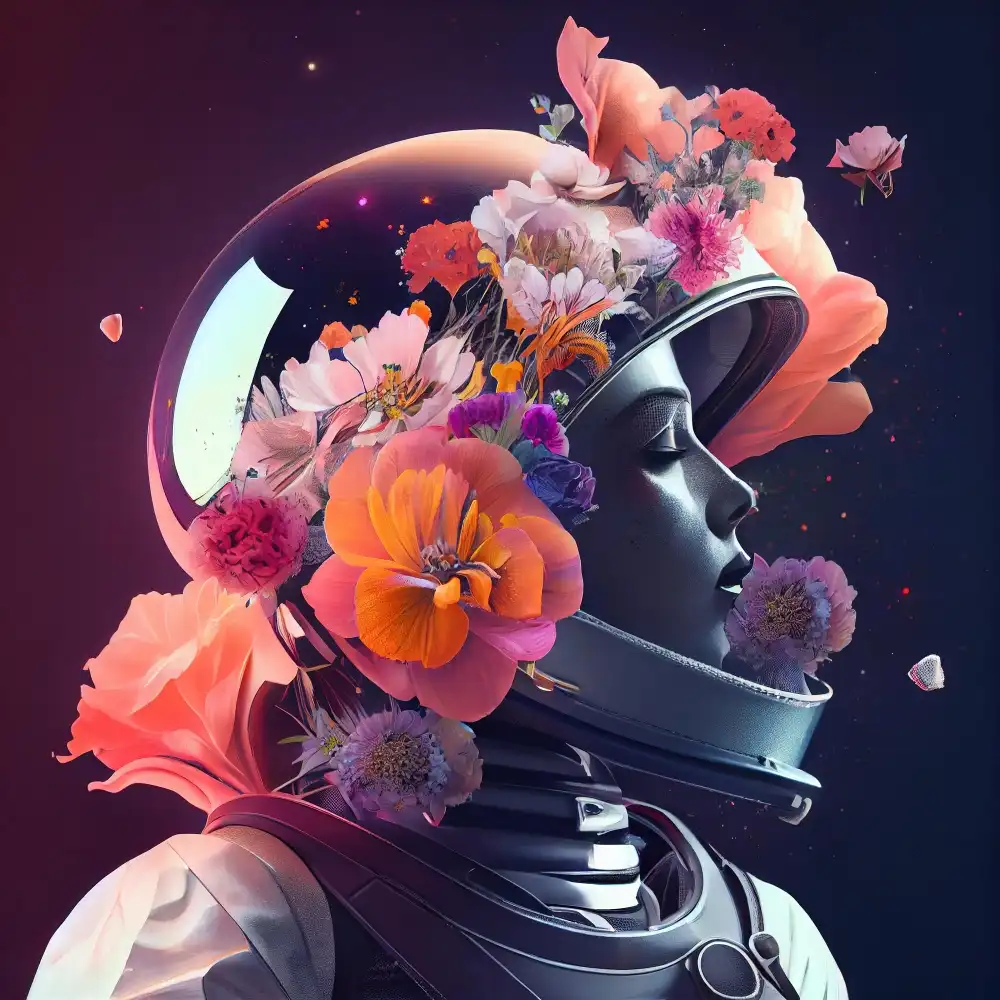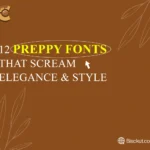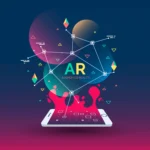Digital art is a playground of endless creativity, where your imagination can take any form. In today’s fast-paced world, innovative art forms and bold visual ideas captivate audiences and push the boundaries of what’s possible. Whether you’re a seasoned professional or a curious beginner, exploring mind-blowing digital art ideas is the perfect way to boost your inspiration and expand your artistic horizons.
In this article, I’ll introduce you to 7 game-changing digital art concepts. From surreal photo manipulation to AI-powered generative art, these ideas aren’t just visually stunning – they’re thought-provoking and designed to make you rethink your approach to creativity. With the right tools and ingenuity, you can create art that surprises your audience, engages them, and leaves them wanting more. Ready to explore the extraordinary? Let’s get started!
1. Futuristic cyberpunk scenes
Futuristic cyberpunk visuals epitomize creativity in digital art, offering an electrifying blend of technology and dystopian storytelling. With neon-lit streets, tall skyscrapers, and aesthetics rooted in high-tech and low-life themes, cyberpunk art immerses viewers in a world of contrasts. The style has become a hallmark of futuristic design, heavily influenced by iconic works such as Blade Runner and Cyberpunk 2077.


Here’s how to bring your futuristic cyberpunk visions to life
Neon Lights
Neon lights are a cornerstone of cyberpunk design, casting a colorful glow across the scene. Use Photoshop or Blender to create glowing neon signs, streetlights, and digital billboards. Bright colors like electric blue, hot pink, and fluorescent green contrast the darkness, creating that iconic cyberpunk atmosphere. For added realism, incorporate reflections on wet surfaces or metal objects, making the light shine through.
Immersive Cityscapes
Design vast, sprawling urban landscapes filled with futuristic architecture, floating vehicles, and tall skyscrapers. Tools like Blender and Unreal Engine help create hyper-realistic urban landscapes. Add digital billboards and flying cars to enhance the futuristic setting. High-tech buildings and futuristic city design create a world that feels alive and full of possibilities.
Holograms & Augmented Reality
Holographic projections and augmented reality (AR) elements bring your cyberpunk world to life. Integrate floating advertisements, AR interfaces, or virtual maps using tools like Cinema 4D or After Effects. These projections create an interactive, tech-driven world that adds depth to your cyberpunk scene.
Cybernetic Enhancements
Characters in cyberpunk often feature cybernetic enhancements such as robotic limbs or glowing eyes. Use ZBrush for 3D modelling to create biomechanical designs that blend technology and humanity. This fusion of humans and machines enhances the dystopian nature of cyberpunk while adding detail and interest to the characters.
Atmospheric Effects
Atmospheric elements like fog, rain, and smoke are vital to cyberpunk art. These effects add depth and mood to your scenes, giving them a gritty, dystopian feel. Use motion blur for moving elements like cars or people and incorporate volumetric lighting for foggy streets. Programs like Blender or Photoshop can be used to create these effects, creating a more immersive environment.
2. Surreal Photo Manipulations


Surrealist photo manipulation offers a fascinating way to transport your audience into a dream-like world where reality bends and transforms. This technique combines realistic images with fantastical elements, creating fascinating, thought-provoking compositions. Here’s how to master surrealist photo manipulation and bring your craziest ideas to life:
Dream-Like Landscapes
Create bizarre landscapes that blur the lines between reality and imagination. You can merge natural elements, like trees or oceans, with unexpected objects or futuristic themes. For example, incorporate floating islands, melting buildings, or twisted skies. Tools like Photoshop and Affinity Photo are ideal for layering multiple images, adjusting perspectives, and creating seamless transitions between different elements.
Incorporating the Human Form
One hallmark of surreal photo manipulation is the alteration of the human figure. Use distorted body parts, merging humans with natural elements like trees, rocks, or animals. Techniques like double exposure or blending layers allow you to fuse contrasting elements. Manipulate proportions, swap out body parts for unusual textures, or place figures in unexpected environments. The goal is to challenge perceptions of the human body.
Atmospheric Effects
For surreal art, the atmosphere is everything. Adding smoke, fog, or mysterious lighting enhances the dreamlike quality. Use motion blur or soft focus to create an ethereal look. Software like Lightroom can help you adjust contrast, saturation, and tone to evoke a specific mood. Layer in glowing elements or flickering lights to give a magical touch to the overall composition.
Manipulating Time and Space
Another key technique in surreal photo manipulation is playing with time and space. Depict objects or people in distorted states of movement, like a clock melting or a person suspended in mid-air. This can be done by manipulating layers and perspectives in Photoshop, or by adjusting the speed and angle of images in programs like After Effects. Multiple-exposure photography can also be used to capture several states of motion in one frame.
Manipulating Nature
Another captivating approach is to manipulate nature itself. This could involve turning everyday plants into something unexpected, like floating trees or giant flowers in the middle of urban environments. Combining organic textures with technological or urban elements is a great way to blend surrealism with reality. Tools like Corel Painter or Photoshop allow for detailed texture work to enhance the manipulation.
AI-Powered Image Generation
AI tools like DeepArt and Artbreeder use neural networks to transform existing images into entirely new creations. By adjusting settings such as color palettes, textures, and styles, you can manipulate and generate endless variations of an image. The style transfer feature allows artists to blend classic painting techniques with modern visual elements, creating unique visual compositions.
Interactive Art
Generative art using AI can also be interactive. AI tools like RunwayML allow users to create dynamic artworks that change based on user interaction. This form of generative art can include motion graphics, where shapes, colors, and objects react to touch, sound, or movement. It’s an exciting way for artists to explore the intersection of technology and human experience.
Creative Algorithms and Machine Learning
AI-driven generative art leverages advanced machine learning algorithms to create art based on inputs provided by the artist. These systems, like Generative Adversarial Networks (GANs), allow artists to generate everything from abstract visuals to realistic imagery. By training models with various datasets, AI can interpret specific artistic styles, offering endless inspiration and unique designs. Popular tools include Artbreeder and Runway ML, which combine AI-generated images with customizable parameters for personalized results.
AI-Assisted Digital Sculpture
Generative art isn’t confined to two dimensions. With AI, you can also experiment with 3D sculpting. Tools like Blender and ZBrush are incorporating AI technology to help artists create digital sculptures and models with enhanced details and textures. AI helps artists visualize their creations from different angles and make automatic adjustments for smoother, more intricate designs.
AI-Generated Music and Sound Design
Generative art doesn’t stop at visuals; AI is also being used to create music and sound. Tools like OpenAI’s MuseNet generate original compositions based on pre-set styles or from scratch. This blend of music and visual art allows for innovative multimedia experiences, where visual art and sound interact seamlessly to create unique emotional effects.
With the rise of generative AI tools, artists can push the boundaries of what’s possible in digital art. Whether you’re working with 3D models, motion graphics, or interactive designs, AI offers endless possibilities to create new and exciting works of art that were previously unimaginable.
4. Mixed Reality Art

Mixed reality (MR) art merges physical and virtual elements to create immersive and interactive experiences, challenging the boundaries of traditional art forms. Using technologies like augmented reality (AR) and virtual reality (VR), MR art invites viewers to engage with the artwork in entirely new ways. Here’s a look at how artists are harnessing MR to revolutionize the creative process:
Blending the Digital and Physical Worlds
At the core of mixed reality, art is the seamless fusion of digital and physical realms. Using AR apps or VR environments, artists can superimpose digital creations onto real-world spaces. For example, creating 3D digital sculptures that interact with physical objects or painting on a virtual canvas that can be explored in a real-world environment. This blend allows for an interactive art experience, where the viewer becomes part of the artwork itself.
Immersive Experiences through Augmented Reality
Augmented reality enables artists to bring static artworks to life by adding interactive layers that viewers can explore through their smartphones or AR glasses. With tools like ARKit and ARCore, artists can create virtual elements that appear to interact with physical objects, such as animated characters or hidden messages that only become visible when viewed through an AR device This technology enhances the viewer’s experience, allowing them to see art from different angles and perspectives.
Interactive Virtual Installations
With virtual reality, artists can create entire virtual worlds that invite viewers to experience their art in immersive 3D environments. These VR installations are not confined by the limitations of physical space, allowing for highly interactive and dynamic artworks. Viewers can explore these environments, interact with virtual objects, and even influence the direction of the art, creating a truly personalized experience. Artists like Marina Abramović have experimented with VR in art, adding new dimensions to performance art through virtual interaction.
Real-Time Interaction and User Input
One of the most exciting aspects of mixed reality art is the ability for viewers to influence the artwork in real time. Using motion sensors, gestural controls, or voice commands, audiences can manipulate digital elements in the artwork, creating a unique experience each time the piece is encountered. This interactive nature of MR art makes it more than just something to look at; it’s an experience to participate in. For example, artists can design immersive murals or sculptures that respond to a viewer’s movements or actions.
Mixed reality art is rapidly changing the way artists engage with audiences. By merging physical spaces with digital experiences, MR art opens new doors for creativity and interaction. Whether you’re experiencing AR layers, exploring virtual installations, or participating in real-time artwork manipulation, the possibilities of MR art are vast, pushing the boundaries of what art can be and how it can be experienced.
5. Retro-Style Pixel Art


Retro-style pixel art channels the nostalgic feel of 8-bit and 16-bit graphics, reminiscent of early video games. With its distinctive visual appeal, it has stood the test of time, evolving from classic arcade games to modern game design, branding, and digital media. Here’s a closer look at why retro pixel art continues to thrive and how you can create your own:
Nostalgic Appeal
Pixel art has a timeless charm that recalls the golden age of gaming. Its minimalist, blocky design brings back memories of classic games like Super Mario and Tetris. This nostalgic aesthetic makes it perfect for game assets, icons, logos, and even animated GIFs. The simplicity of pixel art provides a clean, recognizable style that’s easy for designers to adapt to various applications, from branding to app design.
Game Development
Pixel art remains a staple in game design, especially within the indie game scene. Developers use pixel art to create 2D game assets and retro-inspired games. Modern indie games like Celeste and Undertale use pixel art to evoke nostalgia while incorporating modern storytelling and mechanics. Its accessibility and simplicity make it easy for new game developers to dive into game art creation. Whether you’re designing characters, environments, or animations, pixel art offers a quick, engaging method to develop game visuals without needing complex tools.
Limited Color Palettes for a Retro Vibe
One of the defining features of retro-style pixel art is its limited color palette. In the past, technology restricted the number of colors available, but this restriction has become an aesthetic choice. Artists embrace the challenge of creating detailed, visually rich images with just a few colors. This minimalistic approach allows for greater emphasis on contrast, shading, and depth. Artists can create unique looks with just a few key shades, giving the designs a vintage feel that perfectly fits modern applications, whether in branding, advertising, or web design.
Pixel Art for Branding and Icons
Retro pixel art is gaining popularity in modern branding. Companies are incorporating pixelated icons and retro-inspired logos to stand out in the crowded digital space. Pixel art’s simplicity and recognizability make it an excellent choice for tech brands, gaming companies, and other industries aiming for a youthful and nostalgic vibe. Whether it’s designing app icons, brand logos, or website graphics, pixel art has a unique ability to create a memorable visual identity.
Animation and Movement in Pixel Art
Animation is another area where pixel art excels. Though the frame-by-frame animation process is time-consuming, it creates charming pixel animations that bring static images to life. These animations can be used for character movements, game sequences, or even small animated clips for social media or marketing. The limitation of pixel art enhances its charm, making animations more engaging despite their simplicity.
Merging Retro and Modern Styles
Today’s artists are blending retro pixel art with modern tools and techniques. The result is a fusion of traditional pixel designs with contemporary aesthetics, such as 3D pixel art, or combining pixel art with vector illustrations. These hybrid styles push the boundaries of pixel art, allowing artists to create more dynamic and innovative pieces. Whether you’re experimenting with lighting effects or mixing pixel art with digital painting, the possibilities are endless.
Retro-style pixel art continues to captivate designers and audiences alike, offering a blend of nostalgia and creativity. Whether you’re designing for games, creating brand visuals, or experimenting with animation, pixel art offers endless opportunities to explore and innovate. Embrace its unique aesthetic, and dive into the world of digital retro art.
6. Illustrated Storytelling


Illustrated storytelling has become an essential technique in digital art, blending visuals with narrative to engage audiences in a powerful, immersive way. By combining illustration and storytelling, artists can convey complex emotions, ideas, and stories in a format that is both visually inspiring and narratively compelling. Here’s a breakdown of why illustrated storytelling is so impactful and how you can create your own:
Visual Storytelling with Impact
Illustrated storytelling relies heavily on visual elements to tell a story. Whether through character design, backgrounds, or scene compositions, illustrations allow the artist to evoke emotions and set the tone in ways that words alone cannot. This style is often used in graphic novels, children’s books, and comic strips, where each illustration carries a significant emotional weight. The visual medium adds a layer of depth to the narrative, making it more accessible and relatable to audiences of all ages.
Combining Text and Art
The marriage of text and visuals is a hallmark of illustrated storytelling. The text complements the illustrations by providing additional context, dialogue, or internal thoughts, enriching the overall narrative. This combination makes it easier for audiences to follow the story, especially in children’s literature or interactive storybooks, where both the words and illustrations work together to drive the plot forward.
Character Design and Development
A key element of illustrated storytelling is the character design. Characters are the heart of the narrative, and how they are visualized plays a pivotal role in how the story unfolds. Artists focus on expressive facial features, dynamic poses, and distinctive outfits to bring characters to life. Well-designed characters create an emotional connection with the audience, making the story more relatable and memorable.
Building Atmosphere and World-Building
In illustrated storytelling, the environment is just as important as the characters. Artists create detailed settings, whether it’s a futuristic city or a magical forest, to build a world that feels alive and immersive. The setting not only supports the narrative but also enhances the mood. Through lighting, color palettes, and composition, artists can shift the tone of the story, whether it’s suspenseful, romantic, or adventurous.
Versatility in Digital Platforms
Illustrated storytelling isn’t limited to traditional media like books or comics. The rise of digital platforms has brought illustrated storytelling into the realm of social media, web design, and interactive storytelling apps. Platforms like Instagram and websites allow for animated or static illustrated stories to reach global audiences in new formats. Digital illustrations can now be combined with interactive elements, allowing users to engage with the story in unique ways.
Illustrating Emotions and Symbolism
In illustrated storytelling, emotions are often conveyed not just through facial expressions, but through symbolism and visual metaphors. An artist might use color schemes, shapes, and patterns to represent feelings like joy, fear, or hope, enriching the narrative and adding a layer of depth. These visual cues help the audience connect with the character’s internal experiences in a way that words alone may not capture.
Personalized and Custom Storytelling
Many artists are taking illustrated storytelling to a more personal level, creating customized stories for individuals or brands. Whether through personalized children’s books or custom web stories, illustrated storytelling allows for a tailored experience that resonates deeply with its audience. Artists can adapt characters, settings, and plots based on specific customer needs, creating a unique narrative that speaks to the viewer on a personal level.
7. Pattern Design Challenges

Pattern design is an exciting way to push your creativity and test your design skills. It challenges artists and designers to think about repetitive elements, color theory, and spatial relationships in new and innovative ways. Whether you’re creating fabric patterns, website backgrounds, or branding materials, engaging in pattern design challenges helps hone your abilities and unlocks new ideas. Here’s why pattern design challenges are so effective and how you can get the most out of them:
Boosts Creativity and Innovation
Pattern design challenges force you to think outside the box. When you’re limited by certain constraints—whether it’s a specific theme, color palette, or design rule—you are pushed to think creatively. For example, challenges like 30-day pattern design or one-pattern-a-day challenges encourage designers to come up with fresh concepts daily. This repetitive practice boosts creativity, making it easier to explore different styles and techniques like geometric, floral, and abstract patterns.
Mastering Color Theory
Patterns are a great way to experiment with color combinations and learn the nuances of color theory. Different color pairings can drastically change the mood of a pattern, making it more vibrant or subdued. Through challenges, you can explore how monochromatic, complementary, or analogous colors work together to create cohesive and visually striking patterns. As you develop your skills, you’ll gain a better understanding of how colors influence visual impact and audience perception.
Working with Repetition and Symmetry
A key aspect of pattern design is the use of repetition and symmetry. Creating balanced patterns that repeat elements in a visually satisfying way can be tricky, but pattern challenges help you master these skills. Whether you’re working on seamless patterns for textiles or creating tiled background designs for websites, you’ll learn how to create designs that are both visually appealing and functional. Repetition and symmetry are essential for creating engaging patterns that maintain consistency and flow.
Diverse Design Styles and Themes
Pattern design challenges often come with specific themes or styles that help expand your design portfolio. For example, challenges might focus on creating floral patterns, vintage-inspired designs, or minimalist geometric designs. These themes not only allow you to explore different design techniques but also help you gain versatility as a designer. With each challenge, you’ll be able to add more styles to your toolkit, expanding your range from classic to contemporary design aesthetics.
Improving Technical Skills
Engaging in pattern design challenges can also improve your technical skills in various design software, including Adobe Illustrator, Photoshop, or even Procreate for digital artists. Challenges often require you to create designs that are both technically sound and visually appealing. For example, creating vector-based patterns for fabric printing requires precision and an understanding of how to create scalable designs without losing quality. This hands-on practice helps you get comfortable with tools and techniques that are essential for professional-level pattern design.
Finding Inspiration from Others
One of the best parts about participating in pattern design challenges is the opportunity to see the work of other designers. Platforms like Dribbble, Behance, and Instagram are great places to share your patterns and get inspiration from a global community of artists. Viewing other designers’ creations can spark new ideas and motivate you to take your work in a fresh direction. Additionally, seeing different interpretations of the same challenge theme can help you refine your approach and broaden your design perspective.
Portfolio Growth and Recognition
Pattern design challenges can also help you build a strong portfolio. Regular participation and showcasing your work in online communities can lead to recognition from potential clients or collaborators. You can use your completed designs in portfolio websites, e-commerce platforms, or even to apply for design gigs. As you refine your patterns, you’ll notice improvements in both the quality of your work and the diversity of your portfolio, which can increase your chances of landing freelance or full-time design roles.
Experimenting with Different Media
Another benefit of pattern design challenges is the opportunity to experiment with different media. Although many designers use digital tools for pattern creation, you can also explore hand-drawn patterns, textile patterns, or even collage-based designs. Challenges that focus on specific media allow you to step outside your comfort zone and expand your skill set, whether you’re incorporating watercolor textures, fabric swatches, or photographic elements into your patterns.
In Conclusion
Digital art offers limitless possibilities, allowing artists to push the boundaries of creativity and technology. The ideas explored—surreal photo manipulations, futuristic cyberpunk scenes, generative art using AI, mixed reality art, retro-style pixel art, illustrated storytelling, and pattern design challenges—each brings unique opportunities to create captivating and innovative works. Whether you’re merging reality with dreamlike visuals, building neon-lit cyberpunk worlds, or blending human imagination with AI’s limitless capabilities, these ideas encourage experimentation and growth. They also provide tools and techniques to express your vision in exciting, boundary-pushing ways.
From crafting engaging narratives through illustration to immersing viewers in augmented realities or nostalgic pixelated styles, these art forms resonate with diverse audiences while enhancing your skills and portfolio. Now is the time to dive into these mind-bending digital art ideas, embrace their challenges, and make them your own. By doing so, you’re not just staying relevant in the digital art world—you’re setting the trends of tomorrow.










